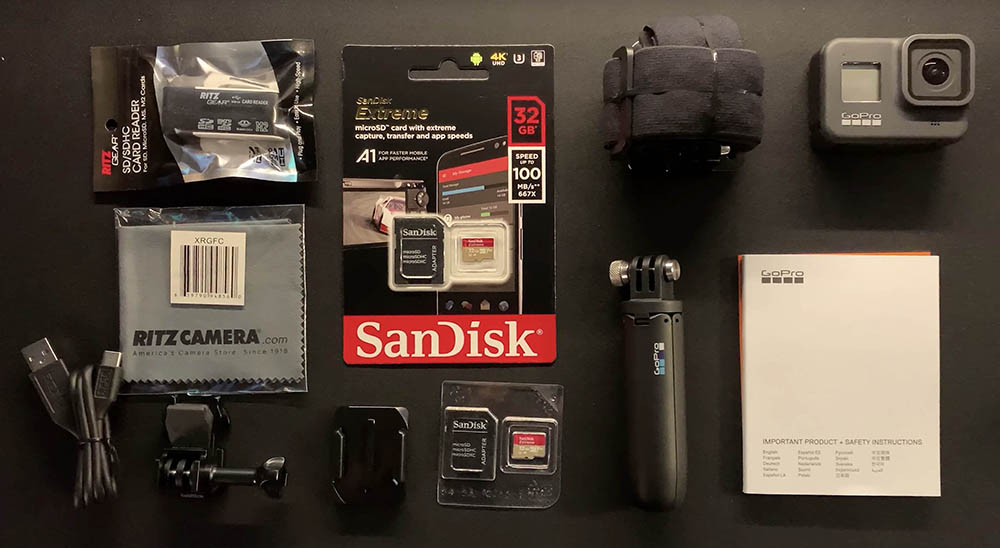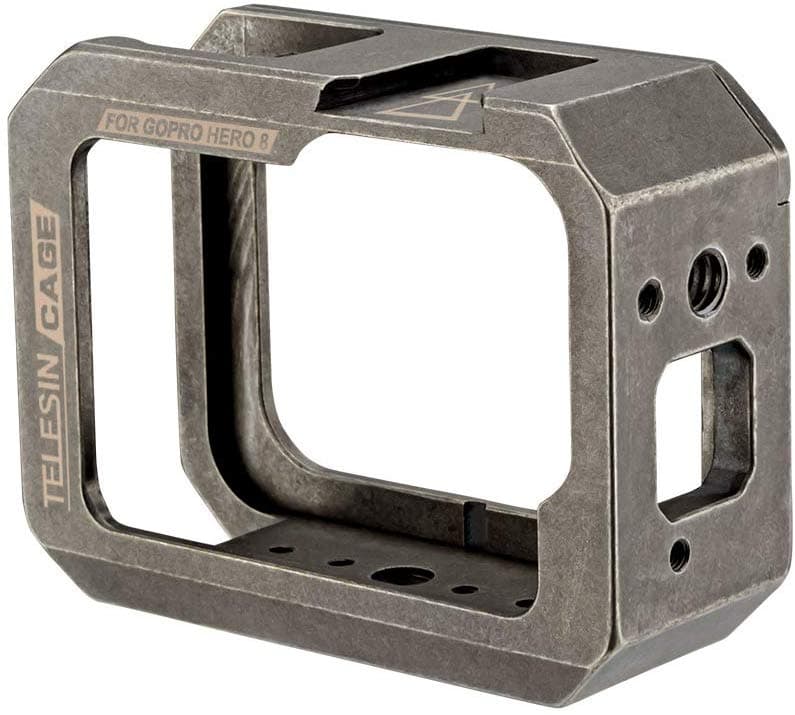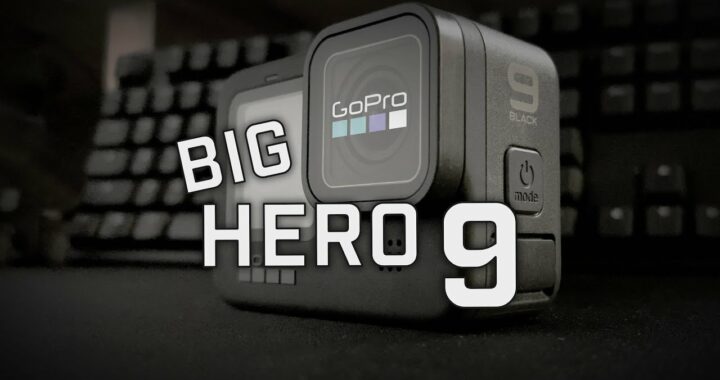As a video nerd, I’m always curious about the latest hardware. When a new camera hits the stores, it takes a much stronger man than I to just watch other people use it. So I created an excuse to purchase the new GoPro Hero 8 Black.

I purchased this kit on Amazon that came with the camera, a head strap, a USB 2.0 card reader that I’ll never use, two tiny 32GB microSD cards, a mount, a USB-C cable, a lens cloth, and a tripod handle mount. The new $399 ($349 on sale for the holidays) Hero 8 has the same form factor as its predecessor, but it is slightly larger. It features increased recording resolution settings, an easier to navigate interface, better time lapse features, and Hypersmooth 2.0; the next generation of GoPro’s motion stabilization technology.

The Hero 8 now supports all sorts of expansion hardware like a better microphone mounts and removable lights with the new Media Mod attachment. The camera mounting system is now integrated as two flaps that fold under the camera’s body. They are easy to flip down for quick use, but they do not seem to be strong enough to hold the camera firm while it is under a lot of stress like on a rocky descent. They also have a lot of “play” that causes them to rattle more than previous camera case mounting systems. I will not be using this new integrated bracket.

I found a cast metal cage on Amazon that appears to hold the camera securely and that is also easy to use. It gives access to the battery and storage compartment and is not very heavy. I feel a lot better about putting my GoPro through a lot of punishment if this thing is protecting it.
The Hero 8 has the same battery form factor as its predecessors. The new battery uses the exact same voltage and in almost all respects is identical to the one used in the Hero 7. According to the GoPro website, you can even use these blue-striped batteries in previous cameras going all the way back to the original Hero as long as your firmware is updated.
Using older batteries, without the blue cap, in the new Hero 8 is a different story. GoPro states that the higher performance modes might not work correctly, or at all. It appears that they work in most respects, and as far as I can tell the older batteries will NOT blow up your new Hero 8 as long as they have the GoPro logo.

One way the 7 and the 8 differ significantly is in field of view. While both cameras have Linear, Wide, and Superview settings, the Hero 8 introduces a “Narrow” setting. Available only at 1080p resolutions, this setting gives the user an extra-narrow field of view with almost no “fish-eye” effect. This works well when a wide-field image isn’t as desirable.
If you want to shoot close-up, you are simply out of luck. Although a lot of wide-field cameras work well in macro-mode, the GoPro fails miserably. Sure, it’s not designed for close-up video, but I don’t think they even tried to implement it as a feature. Anything less than a couple of feet away ends up extremely blurry.
Replacing the Micro-SD card is a trick. I was able to get it done without removing the battery on the Hero 7, but the Hero 8 is a different story. As much as I tried, my fingers just couldn’t get that little card to click into the slot. I had to remove the battery in order to be sure it went in properly. In the process, the door popped off. I guess that’s supposed to happen, but it was alarming when it happened the first time. I sure hope that it doesn’t fall into some bushes or down a ravine while I replace a card on a ride.
This new “night lapse” mode looks pretty cool. It can record a series of long exposure images (longer exposures capture more light) and it will build a video from them. Great for starry nights or slow moving cityscapes. I can’t wait to play with it.
The motion stabilization is the heart of the reason I purchased this camera, and it is also the center of this review. After all, bumpy downhill trails are a lot more fun to watch when you can see what is going on. I rode the same segment of trail using both the Hero 7 Black and the Hero 8 Black. Both cameras were set to 4K Superview at 30 fps with hypersmooth turned on. The results were clear and immediate.
The Hero 8 presents a much smoother picture when riding over rocky terrain while the Hero 7 shows the little bumps. The 8 appears to be better at compensating for the high frequency chatter. The 7 is still great – don’t get me wrong – but there is a definite improvement when using the newer camera.
The new Hypersmooth 2.0 is incredible. The improvement over footage captured on a camera that has no stabilization is staggering. Compared to a camera with the previous Hypersmooth the Hero 8 is significantly better. Shots that have a few bumps and rocks on the Hero 7 are as smooth as butter on the Hero 8. They are not perfect, but they look almost like they were shot on a dolly.
I definitely recommend the GoPro Hero 8 Black. If you want great looking, stabilized and smooth video at 4K/60fps, there are few other options that even approach this hardware. (One of the biggest contenders is the Hero 7 Black and it is almost as good, so you might not need to upgrade if you have a 7.)
Overall, I give it a big thumbs up.
Pros:
- Increased resolution and FPS over previous models
- Amazing stabilization with Hypersmooth 2.0
- Improved night time lapse video
- 1080p live streaming
- New angle modes
- Better HDR (sort of)
Cons:
- Poorly designed integrated mount
- Close-up video and stills are very blurry
- Touch screen is sometimes not responsive
- Micro SD slot is very difficult to access
- Battery door pops off occasionally


